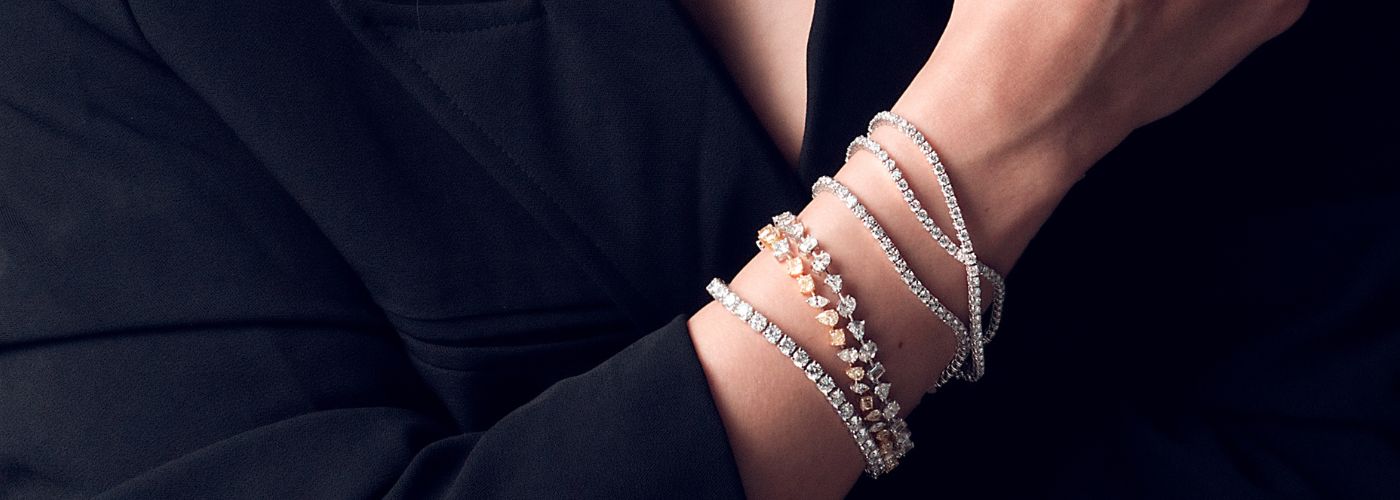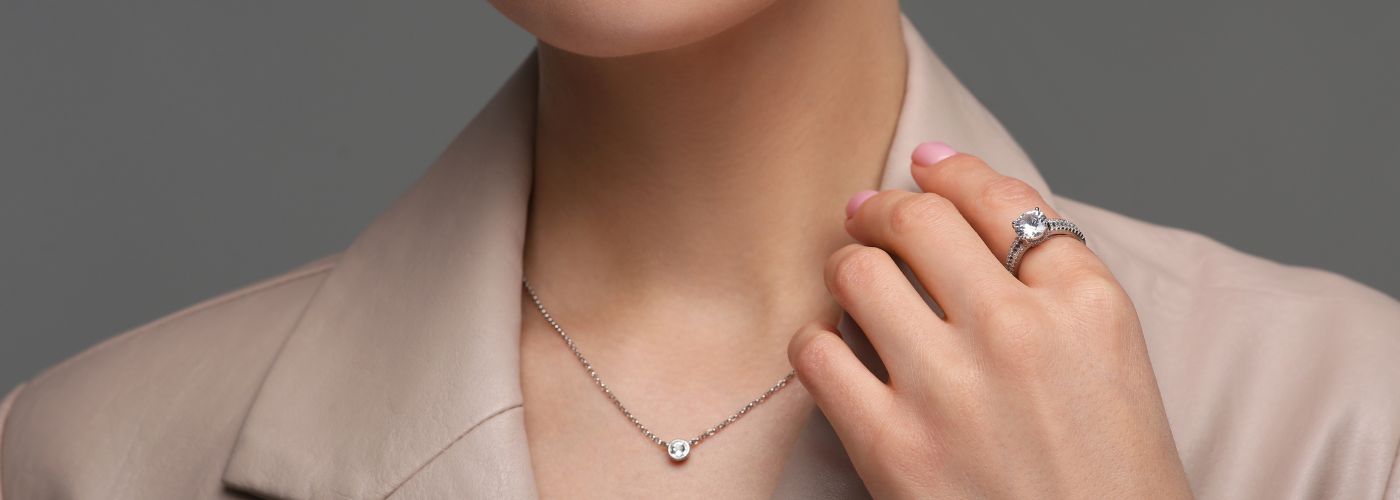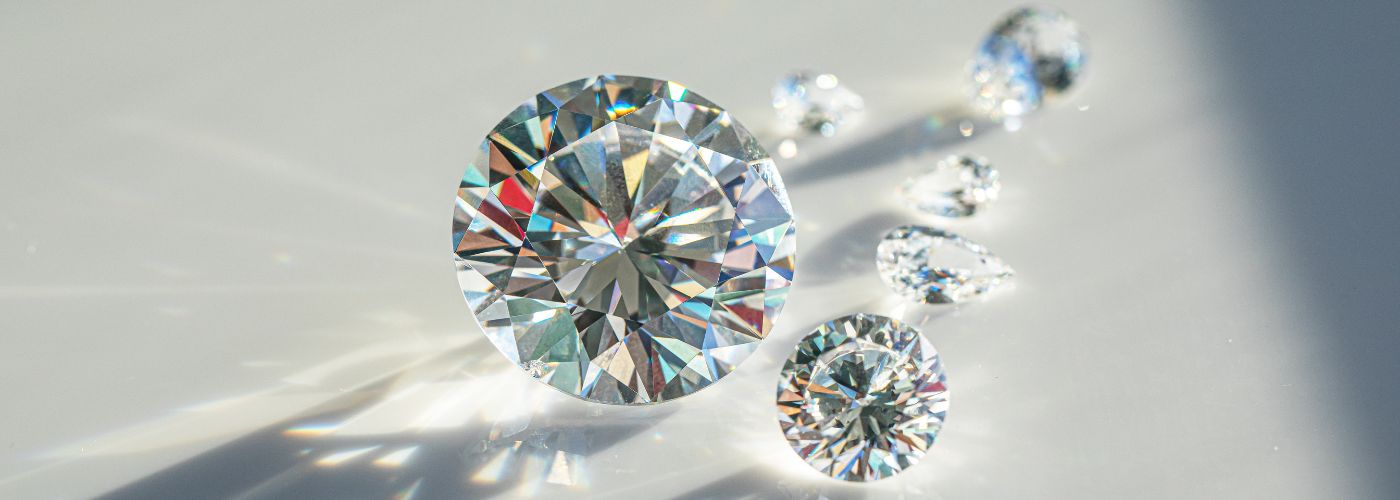Sparkling and mesmerizing, both Swarovski crystals and diamonds have captivated the hearts of jewelry enthusiasts for centuries. But in the eternal debate of Swarovski crystals vs diamonds, which reigns supreme? Is it the timeless allure of natural diamonds or the modern glamour of precision-cut crystals that will steal the spotlight? Let’s delve into their origins, properties, and cultural significance to unravel this age-old question!
Differences Between Swarovski Crystals vs Diamonds
Swarovski crystals and diamonds are both beautiful gemstones that have long captured the hearts of jewelry lovers worldwide.
One key difference between the two is their composition – Swarovski crystals are man-made, while diamonds are natural gems formed deep within the Earth’s mantle. This distinction not only affects their value but also their durability and brilliance.
When it comes down to choosing between Swarovski crystals vs diamonds, it ultimately boils down to personal preference and budget. Both gemstones have unique qualities that can enhance any piece of jewelry or accessory, making them timeless classics in their own right.
Whether you opt for the dazzling allure of a diamond or the glamorous sparkle of a Swarovski bracelet, both choices are sure to add a touch of elegance and sophistication to your collection.
Benefits of Swarovski Crystals
Swarovski crystals are known not only for their unparalleled sparkle and shine but also for the numerous benefits they offer. One of the key advantages of Swarovski crystals is their exceptional quality and craftsmanship, making them a popular choice for jewelry designers and artists.

These crystals are also renowned for their durability, ensuring that they maintain their brilliance and luster over time. Swarovski Crystals are also a lot cheaper because they are not mined from the ground like natural gemstones, but rather manufactured using a precise process developed by Swarovski. This makes them more affordable and accessible to a wider range of customers.
Additionally, Swarovski crystals come in a wide variety of colors, shapes, and sizes, allowing for endless creative possibilities when designing jewelry or embellishing clothing and accessories.
Overall, Swarovski crystals combine beauty with practicality, making them a favorite among designers and consumers alike.
Negatives of Swarovski Crystals
While Swarovski crystals are known for their stunning beauty and sparkle, there are some drawbacks to using them in jewelry and accessories. One of the main negatives is that they can be quite costly compared to gemstones. This may limit the accessibility of Swarovski pieces to those on a tighter budget, making them less inclusive as a fashion statement.
Another negative aspect of Swarovski crystals is that they are not considered a natural resource, as they are man-made. Some people prefer jewelry made from natural gemstones for their organic and earthy feel, which Swarovski crystals do not provide.
However, Swarovski crystals are still an amazing affordable option compared to Diamonds. Swarovski crystals are also renowned for their exceptional brilliance and sparkle, often being compared to diamonds in terms of their dazzling appearance. They are expertly cut and crafted to reflect light in a truly mesmerizing way!
Benefits of Diamonds
Swarovski Crystals have long been admired for their brilliance and luxury. Unlike crystals, diamonds are the hardest known natural material on Earth, making them highly resistant to scratching and chipping. This durability ensures that diamonds can be enjoyed for a lifetime without losing their luster.
In addition to their durability, diamonds also hold significant sentimental value. Known as a symbol of love and commitment, diamonds are often used in engagement rings to represent eternal love.
The rarity and uniqueness of each diamond also add to its allure, creating a sense of exclusivity that cannot be matched by mass-produced crystals.
Negatives of Diamonds
One major drawback is the issue of conflict diamonds, also known as blood diamonds, which are mined in war zones and used to finance armed conflicts against governments. Additionally, the environmental impact of diamond mining is concerning, as it often involves large-scale excavation and alters ecosystems.

Comparing diamonds to Swarovski crystals reveals another negative aspect of diamonds – their price tag. Swarovski crystals offer a more affordable alternative that mimics the look of diamonds without the ethical or financial burden.
As consumers become more conscious of sustainability and ethical sourcing, this cost-effective option highlights the drawbacks of investing in traditional diamond jewelry.
How Long Do Swarovski Crystals & Diamonds Last?
Swarovski crystals and diamonds are both renowned for their dazzling beauty, but when it comes to longevity, they stand on opposite ends of the spectrum. Swarovski crystals, while stunning in appearance, are man-made gems that may show signs of wear and tear over decades of use.
On the other hand, diamonds have long been considered one of the hardest substances known to man, making them incredibly durable and able to withstand the test of time.
Are Swarovski Crystals & Diamonds Worth It?
Swarovski crystals are often compared to diamonds for their sparkle and brilliance, but are they truly worth it? While diamonds may hold more monetary value and prestige, Swarovski crystals offer a more affordable alternative without compromising on beauty. These man-made crystals are crafted with precision and cutting-edge technology to achieve the same captivating shine as natural diamonds.
In terms of quality and durability, Swarovski crystals also hold up well over time, making them a practical choice for everyday wear. Their exceptional clarity and light-refracting properties make them stand out in any setting, whether it be a glamorous event or a casual outing! They also pair great with negative ion jewelry as well!


Latest from our blog
How to Practice Mindfulness Daily
Are you often overwhelmed by the chaos of daily life, wishing you could find a
Feb
How To Use Feng Shui With Negative Ion Jewelry
Imagine walking into your home and instantly feeling a sense of calm wash over you.
Jan
Are Negative Ions More Powerful in Winter?
Negative ions, often known for their refreshing effects on mood and energy, have garnered interest
Dec
Best Times & Places For Natural Negative Ions
In this article, we’ll explore the best times & places for natural negative ions—from sunlit
Nov